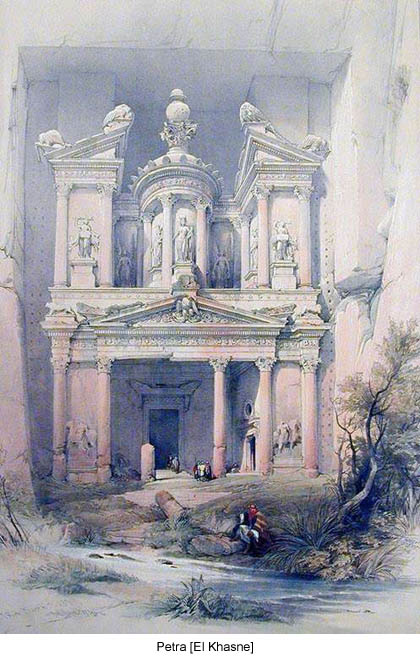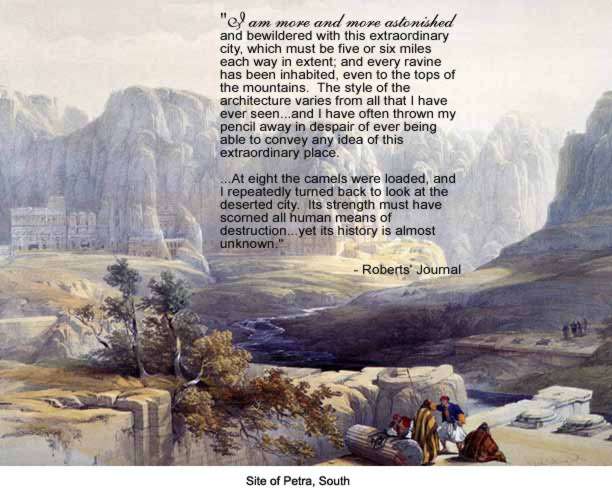


Petra lies in a deep, arid canyon in modern day Jordan, some distance south of the Dead Sea. It is still not certain when the nomadic Nabateans, a now lost civilization, established their capital there, but by the first century B.C. it had become a main stop on the caravan route between the Arabian Peninsula and the Mediterranean. Its grand architecture was literally hewn into the pink sandstone cliffs that closely surround the entire abandoned city, much as if an ancient metropolis had been carved into the walls of the Grand Canyon. It is reached only by passage through a long, narrow defile known as the "Siq", and the traveler bursts upon it much like Shangri-La in Lost Horizons. Its mysterious and solitary setting, with no modern city having arisen on its site, and its unique mix of Greek, Roman and Egyptian elements, together with the Nabateans own styles and designs, make it unlike any other place on earth. Unlike the tombs of the Nile, there are only small rooms behind the grand facades, showing some evidence of use as mausoleums for royalty or prominent families. The monuments seem to be a cross between private shrines and public works of art. After the Romans conquered the city in the first century A.D. it slowly lost its status with the decline of the caravans and was eventually abandoned, forever obscuring the history of the Nabateans.
Roberts was by now a seasoned and perhaps somewhat jaded traveler, having seen the wonders of Europe and the grand constructions of ancient Egypt. But his journal entries made at Petra, which he had originally intended to bypass, attest to its power and mystery: (View the lithographs of Petra.)
